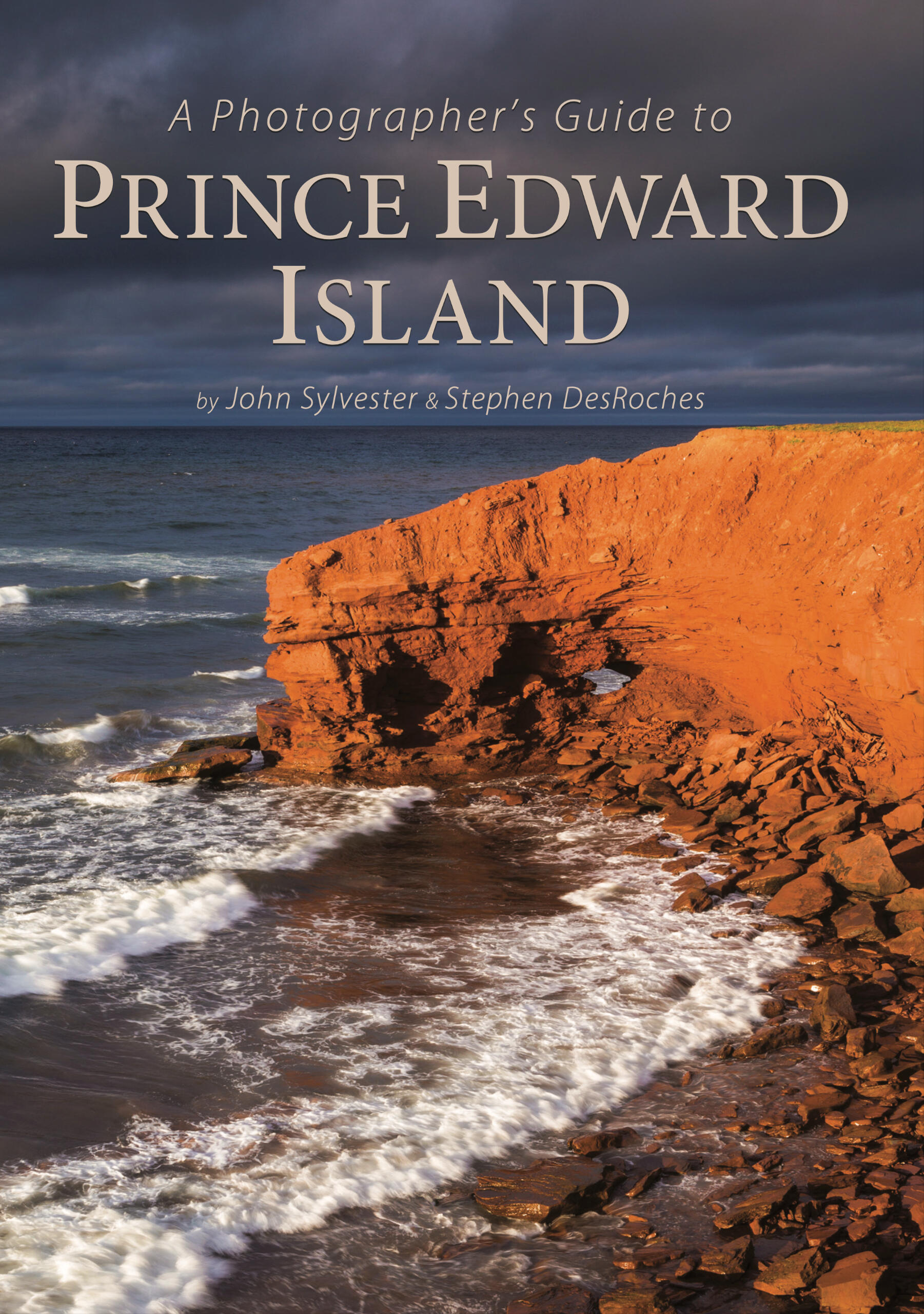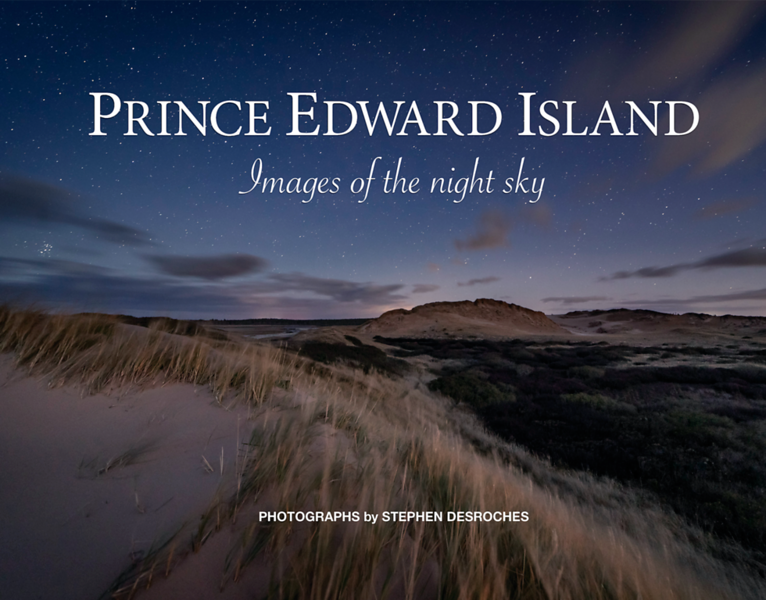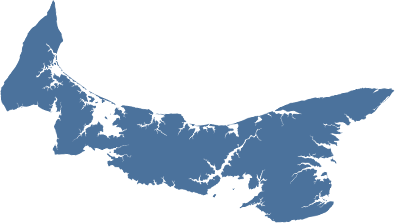
A Photographer's Guide to Prince Edward Island
Prince Edward Island is a wonderful place for the landscape photographer. It is a place of vibrant primary colours: red soil, green fields and blue water. It may be Canada’s smallest province, but there’s a remarkable diversity of scenery.The Island boasts more roads per capita than any other province in Canada, so there’s lots to explore. A Photographer's Guide to PEI was a book designed to keep you on the right track to find the best photography locations in all seasons and at the right time of day.We never fail to find new, “undiscovered” locations almost every year.

A photographer's playground
Getting started
Tourism Prince Edward Island has conveniently divided the island into three coastal drives: (from east to west) the Points East Coastal Drive, Central Coastal Drive (which is further divided into the Green Gables Shore and Red Sands Shore Drives) and the North Cape Coastal Drive.
Prince Edward Island has three entry points: Wood Islands is the arrival port for the seasonal ferry from Caribou, Nova Scotia; Borden-Carleton is the Island anchor of the 12.9 km Confederation Bridge spanning the Northumberland Strait from New Brunswick; and Charlottetown is where you’ll land if arriving by air.
The Tourism Prince Edward Island road map is all you’ll need. It’s available at Visitor Centres in Wood Islands, Borden-Carleton and at the Charlottetown airport, or you can order one before you leave home: www.tourismpei.com
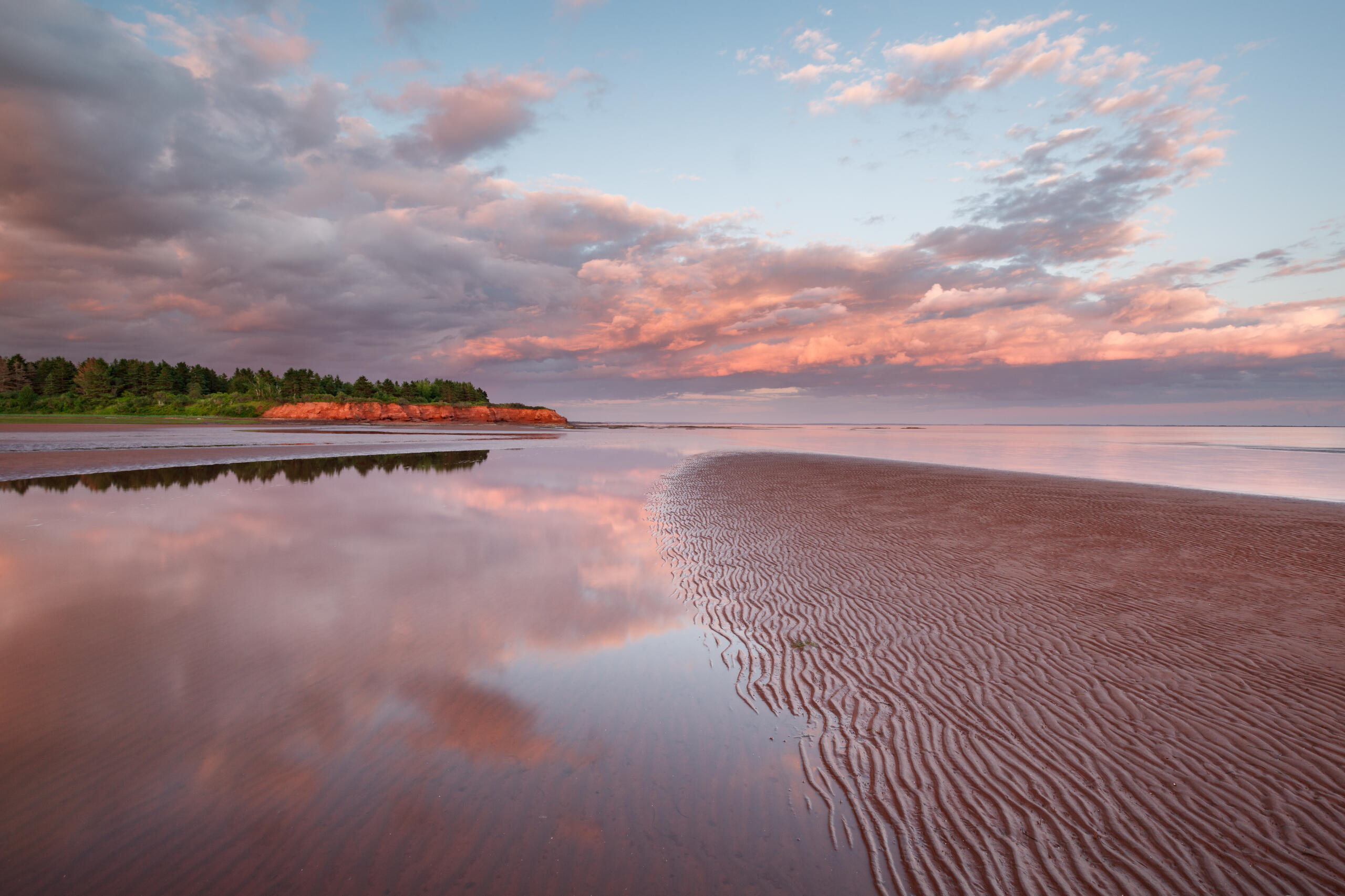
1,770 km of coastline
Borders defined by the ocean
Prince Edward Island is a tourist destination, so there are plenty of accommodation options, including hotels and motels, inns, bed & breakfasts and National Park campgrounds, plus many provincial and privately run campgrounds. Most of these are open during the tourist season, which runs roughly from mid-June to mid-September. Accommodations in Charlottetown and Summerside are open year- round. Consult the Tourism PEI Visitor’s Guide for more information. www.tourismpei.comThe Island is small enough (224 km/140 mi long) that you may overnight in Charlottetown or Summerside, and, provided you get up early enough, arrive in time to catch the sunrise anywhere in the province.

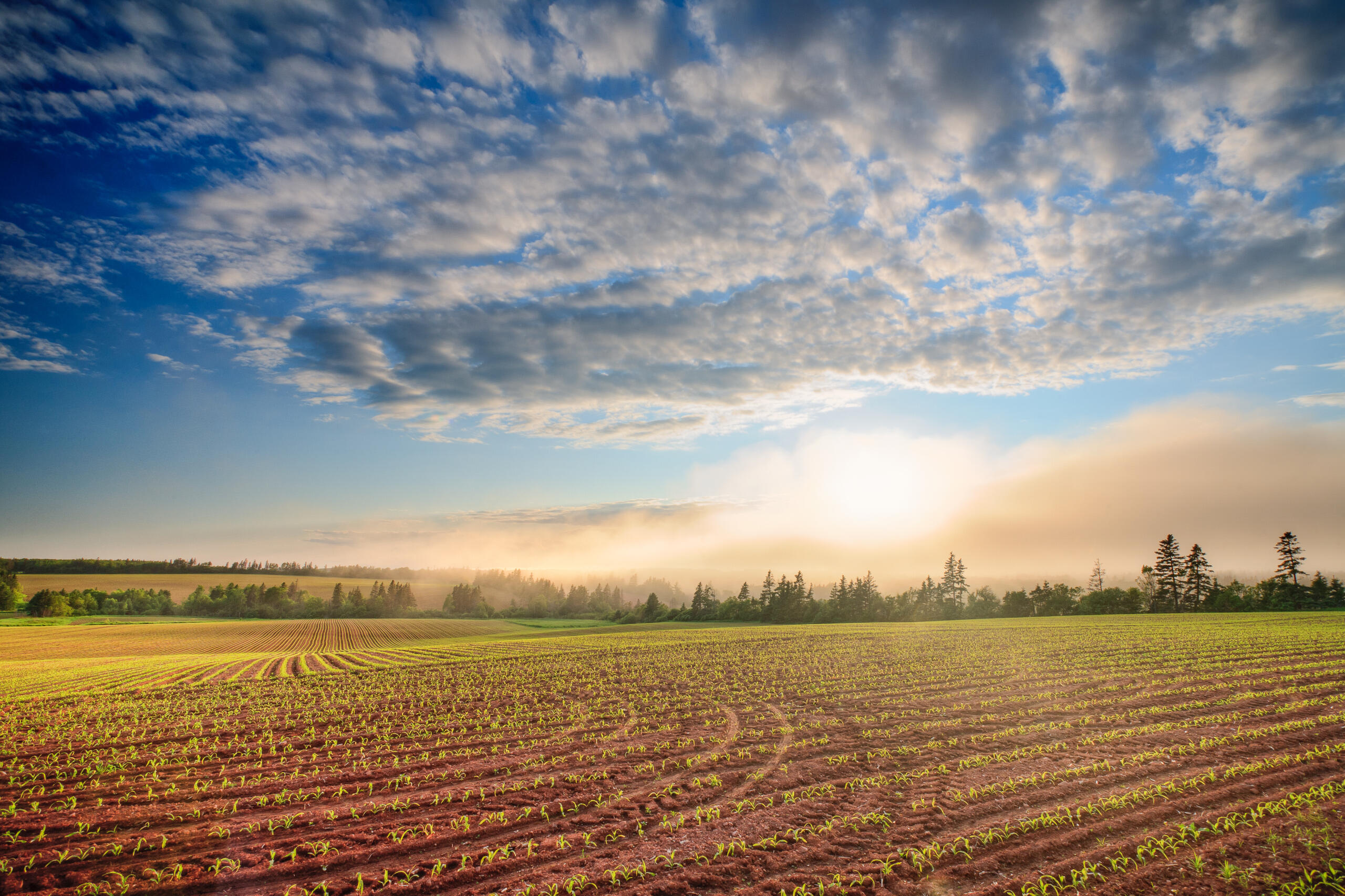
Spring
April – May
Spring comes late to Prince Edward Island. Snow lingers well into April and it stays fairly cool well into May, but by late April you’ll find farmers on the land with tillage and planting equipment carving patterns into the Island’s famous red soil. May 1 marks the start of the lobster season in harbours stretching along the eastern and northern shores from Charlottetown to Tignish. The season lasts from May 1 to June 30. “Setting Day” is not to be missed if you’re on the Island at the beginning of the season. That’s when fishing boats laden with lobster traps leave harbour for the first time to set their traps in the Gulf of St. Lawrence. North Rustico is a popular place to watch the spectacle, but it can be witnessed at any of the harbours in the fishing district. The boats leave harbour just before sunrise and return to port throughout the morning until all the traps are “set.” In the evening you’ll find boats tied up at wharves, offering lots of photographic opportunities to capture boat reflections in calm waters. The season lasts until the end of June, as does the opportunity to photograph fishing boats cruising into the Gulf of St. Lawrence at sunrise.Spring is also a good time to photograph along the cliffs in Prince Edward Island National Park and other north shore locations. The rocks that have tumbled down from the cliffs during winter storms have yet to be eroded by waves or the feet of tourists.
Summer
June
Island author Lucy Maud Montgomery famously described June on the Island as a time when “the greenness of everything is something to steep your soul in.” It is prime time for photography. In addition to the many shades of green, it is a time for wildflowers. The first two weeks in June bring apple blossoms; the second week of June is reliably the best time to find in Island woodlands the provincial floral emblem, the Pink Lady’s Slipper; and, not to be missed, the best flower show of all is the blossoming of lupins along Island roads, which lasts for about two weeks, from mid- to late June.June is also when you’ll experience the longest days of the year, so you must rise before 5:00 a.m. to catch a sunrise. Evening light can last past 9:30 p.m.
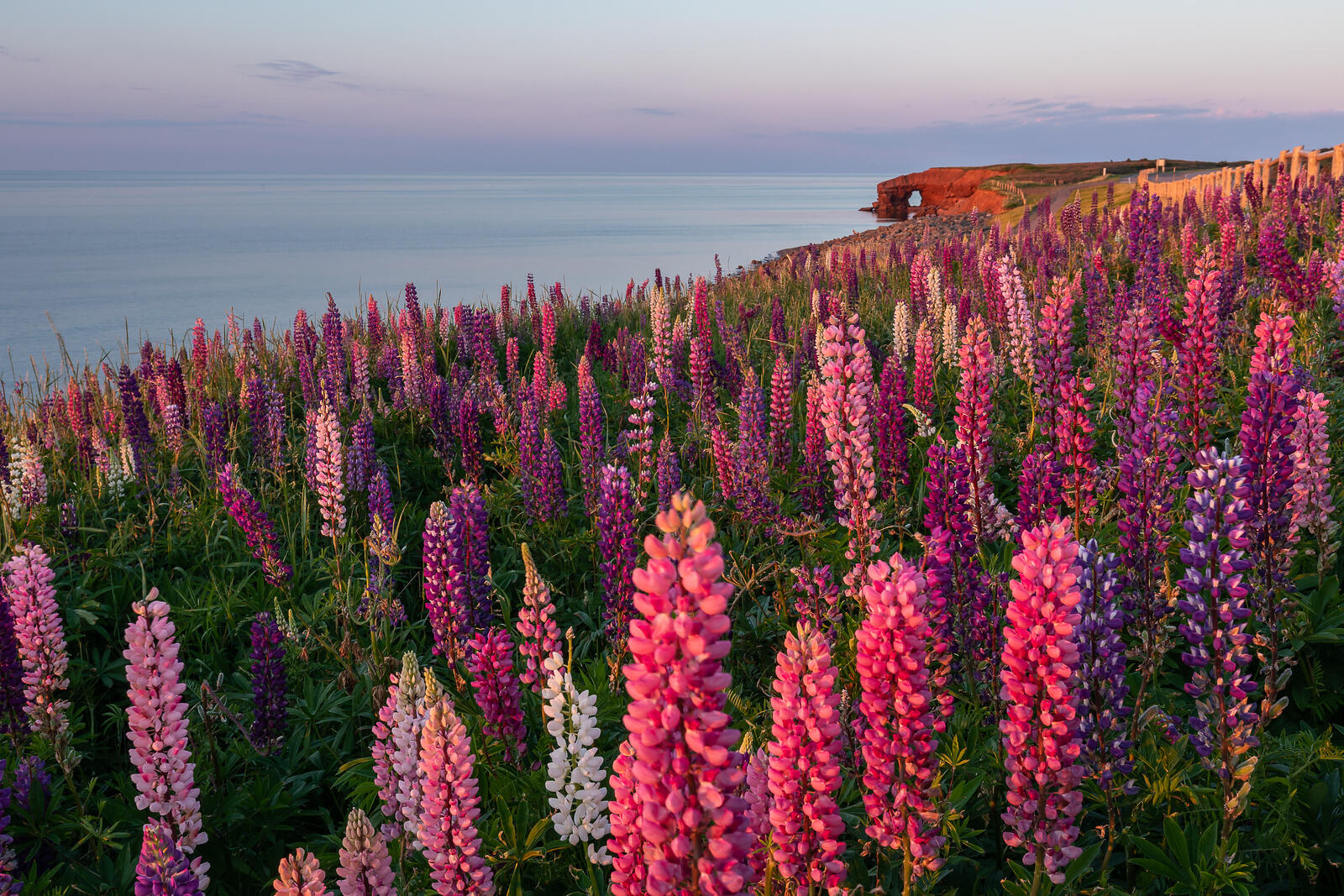
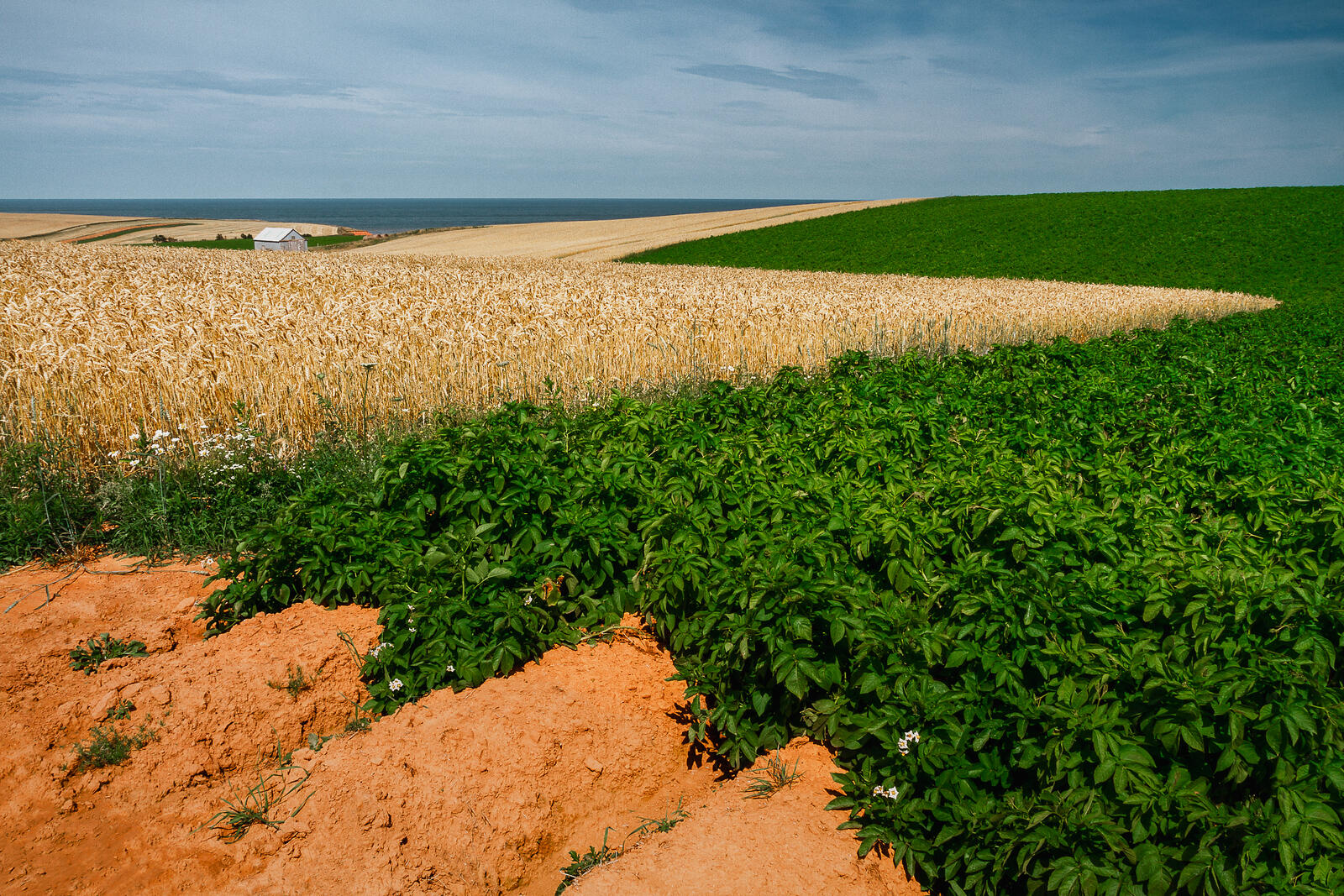
Summer
July
July is a good time to photograph the agricultural landscape of the Island. In early July potato fields appear as long rows of green leaves, and by late July the leaves form a canopy sprinkled with white or pink blossoms; the grain crops are still green but reaching a height where they will sway lazily in summer breezes, which can make for impressionistic blurred images; in mid-July the canola fields come into bright yellow blossom, which is especially beautiful set against a blue ocean backdrop. July is also the best time to find fields of round hay bales, pastures filled with daisies and yellow-petalled, Brown-Eyed Susans blossoming along country roads.By late July the marram grass covering the Island’s sand dunes forms a deep green carpet and many wildflowers blossom in the lee side of the dunes, called the dune slack, including wild rose, beach pea, lupins and fireweed.
Summer
August
The fall lobster fishing season begins August 10 (and runs until October 10) in harbours from Tignish to Victoria. While it represents a much smaller fishery than the spring season, there’s lots of activity in these ports throughout the season, and remember: the harbours will be empty of boats in the morning, so your best photographic opportunities will be in the evenings. In the days leading up to the fall lobster season, a visit to fishing villages in the Acadian region is well worth it (Tignish, Jude’s Point, Seacow Pond, Abrams Village, Egmont Bay, Skinners Pond, Miminegash). Fishers in this region paint their buoys – used to mark the location of their lobster traps – in the brightest colours. The freshly painted buoys can be found lined up on the wharves or drying on the sides of fish sheds, awaiting the start of the season.August also marks the beginning of the agricultural harvest. The grain crops are golden and ready for combining. Look for straw bales in harvested fields in mid- to late August.
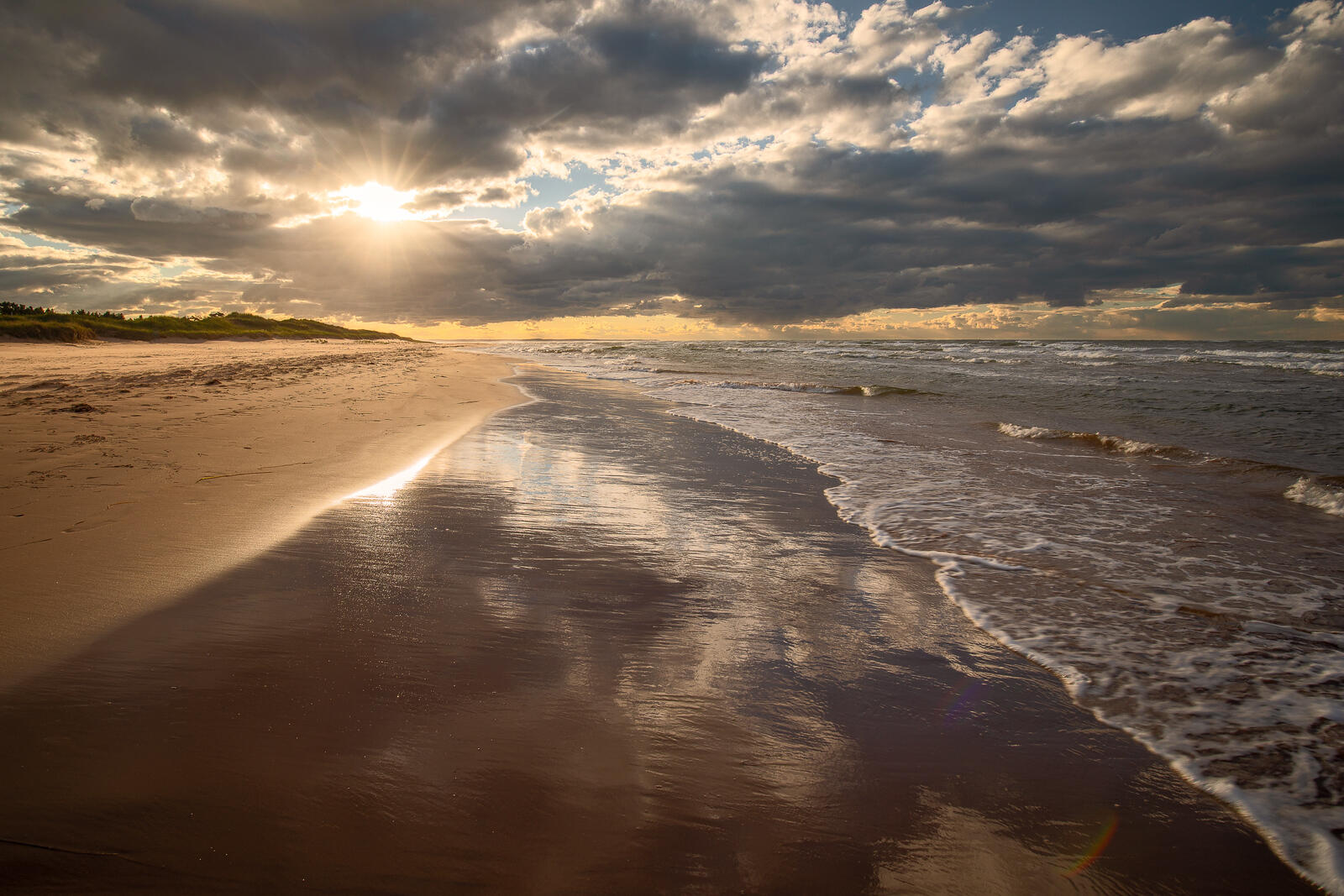

Autumn
September
September is a good time to photograph the Island’s sand dunes. The first storms of autumn have swept away summer footprints and the dunes return to a wild and pristine state. The marram grass is still green, but with tall seed heads that will eventually turn golden with first frost. Caution: be careful not to step on marram grass. As few as ten footsteps on the grass can kill it. Deep-rooted marram grass holds the sand in place preventing blowouts and erosion. September is the time to look for windswept patterns in the sand, storm-driven ocean waves, dramatic skies and migrating shorebirds along the beaches.September also marks the start of potato harvest. If you’re interested in photographing human activity in the landscape, the potato harvest provides plenty of opportunities.
Summer
October
Potato harvest extends into October, but general farm activity is winding down at this time of year, with the exception of fall plowing. However, the autumn colours begin in early October and last until about mid-month, depending on the year. Prince Edward Island doesn’t get the broad swaths of colour you’ll find in Cape Breton or parts of New Brunswick, because it doesn’t have the large hardwood forests found in those provinces. But if you tour the Island’s designated “Heritage Roads” or bicycle the Confederation Trail, you’ll discover plenty of autumn colour in leafy canopies over the narrow dirt roads and cycling trails. Fallen leaves offer a colourful foreground.
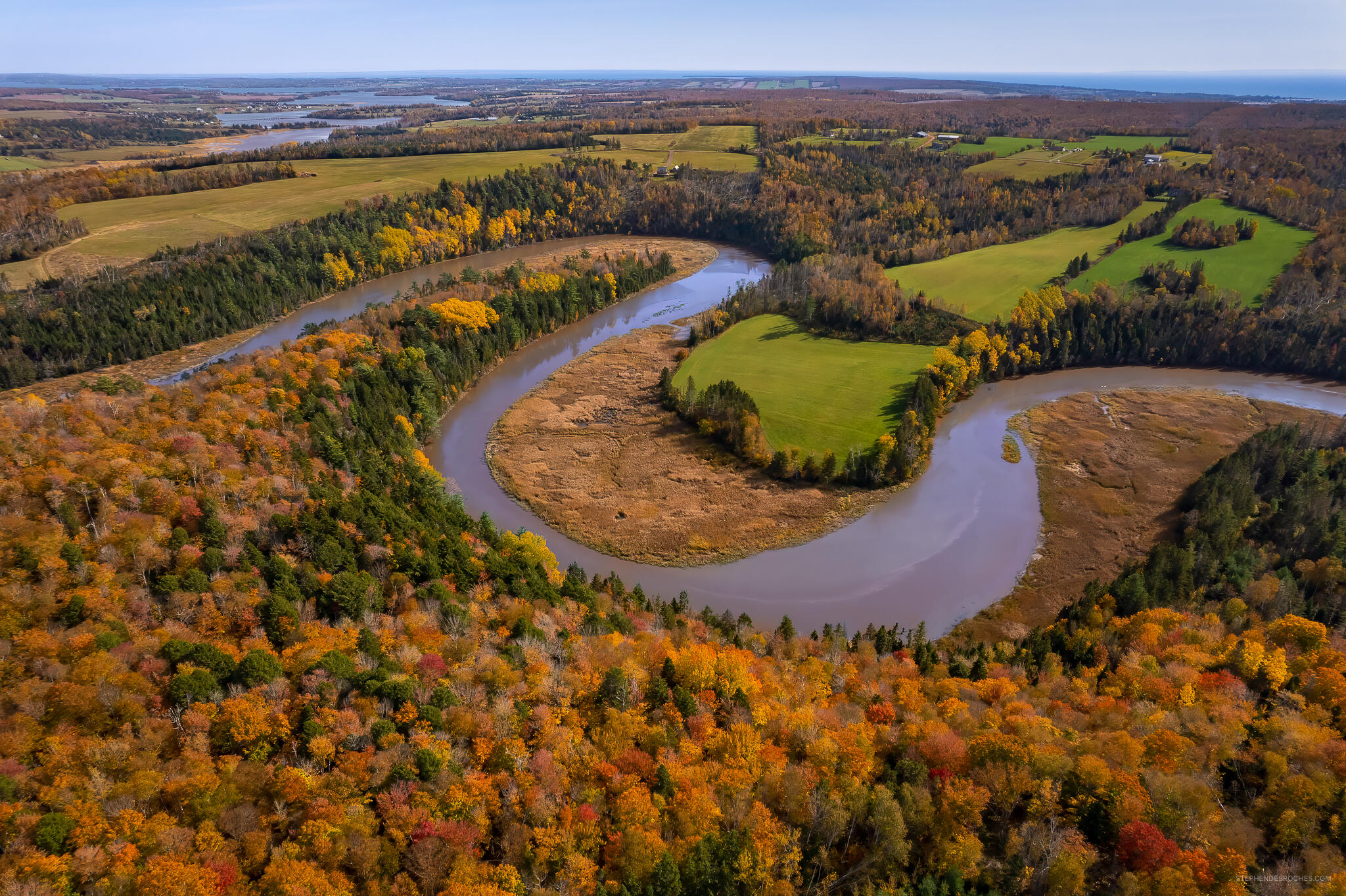
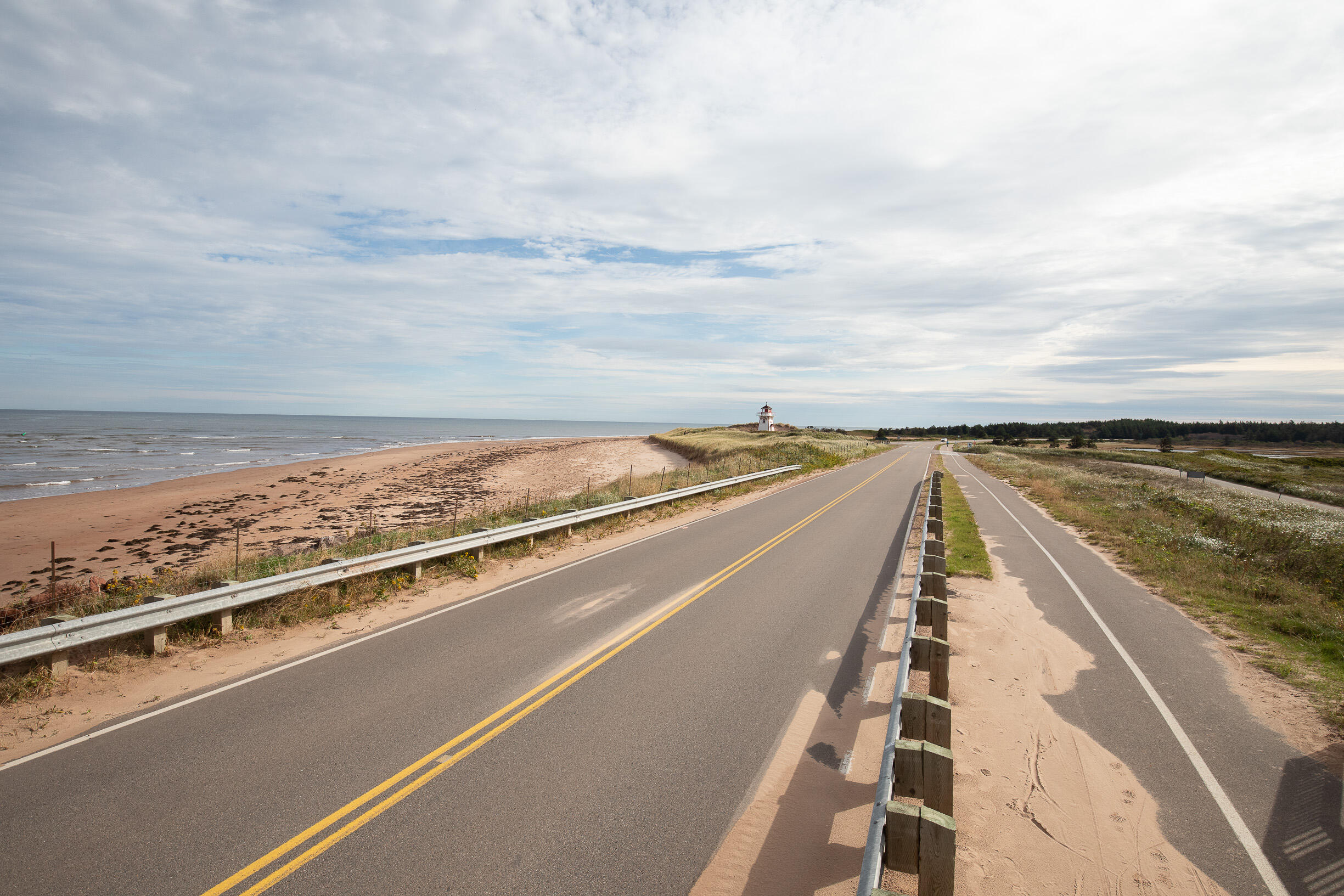
Autumn
November
This can be a dreary time of year on the Island (as it is in most of Canada): the leaves are on the ground and the fields are brown. Winter doesn’t arrive in earnest until after Christmas in Prince Edward Island, but when the first snows fall – and there is always an early snowfall during these months – it can be beautiful.
Winter
December – March
Prince Edward Island is a windy place and snow tends to come down “horizontally” rather than benignly falling from the sky. In winter, the best photographic opportunities often arrive with unusual weather events, such as the aftermath of a freezing rain storm, a hoar frost or “silver freeze,” or a rare windless snowfall. It is also a good time to photograph along the coast. In January, sea ice forms in the Gulf of St. Lawrence and lasts until late March. The shifting pans of ice provide an ever-changing canvas for the landscape photographer. It’s also a good time to photograph the red foxes that reside in Prince Edward Island National Park. They are resplendent in their thick winter fur. In late March look for harp seals on the sea ice.
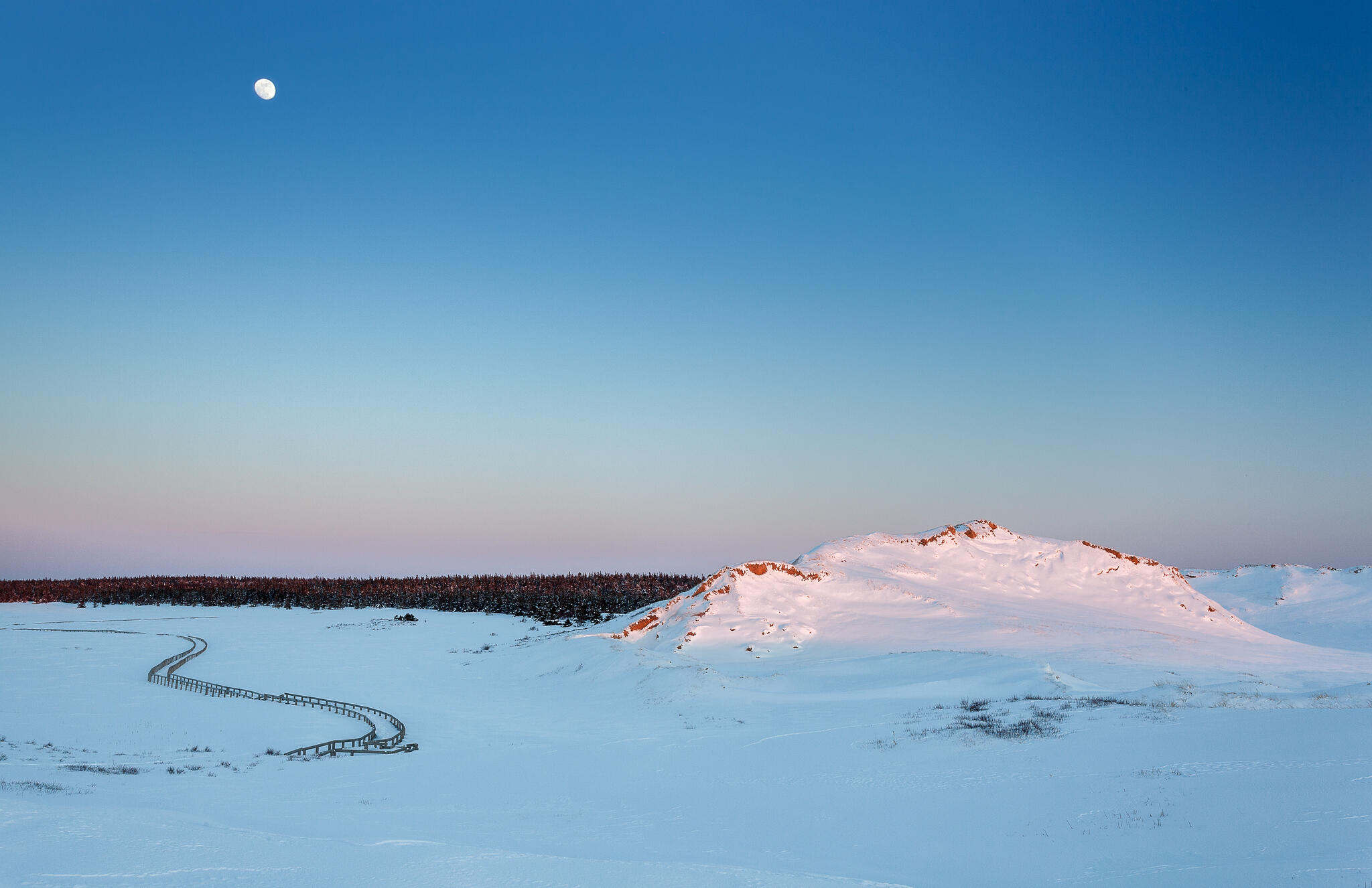
Acorn Press (2018)
A Photographer's Guide to Prince Edward Island
In loving memory of John Sylvester.This guidebook of 40+ island locations was first published in 2015 and again in 2018 by Stephen DesRoches and John Sylvester. John passed in 2025, but his photographs, writings, and deep love for our island home continue to inspire through publications and cherished memories.ISBN: 978-1773660110
Temporarily Out of Print
John Sylvester
John Sylvester was an award-winning travel, nature and landscape photographer who had called Prince Edward Island home for more than thirty-five years. His work appears in leading publications throughout the world. This was John’s sixth book of photography featuring images of Prince Edward Island.


Stephen DesRoches
Stephen DesRoches is a landscape photographer, born and raised in Prince Edward Island. His images appear in island tourism publications, and was a participating ambassador to the Ask an Islander tourism program.
Acorn Press (2019)
Images of the Night Sky
Prince Edward Island is celebrated the world over for its pristine beaches, charming villages, and scenic vistas. While many books have celebrated the Island's beauty over the years, no book has focused solely on photographs of the Island at night.ISBN: 978-1773660240
